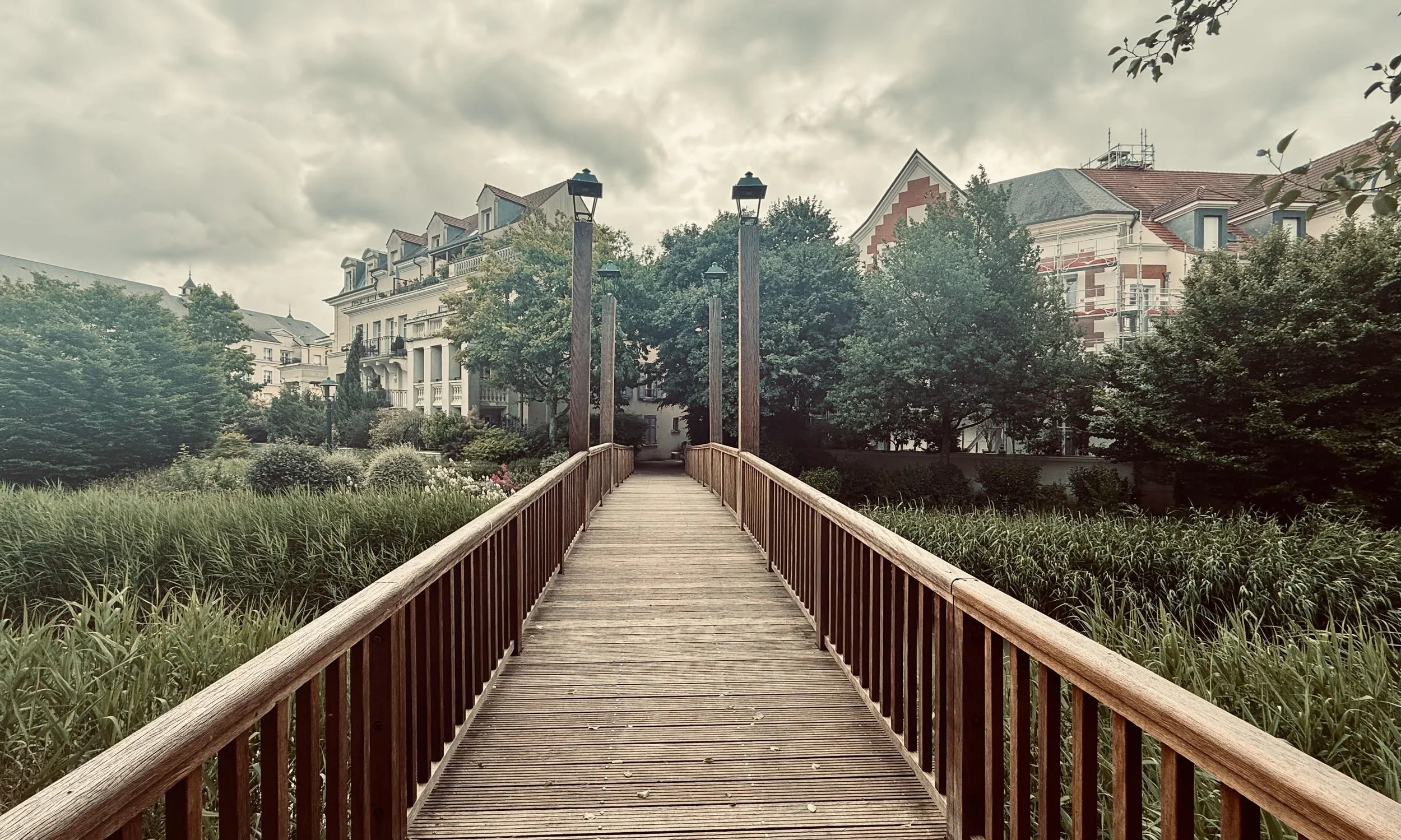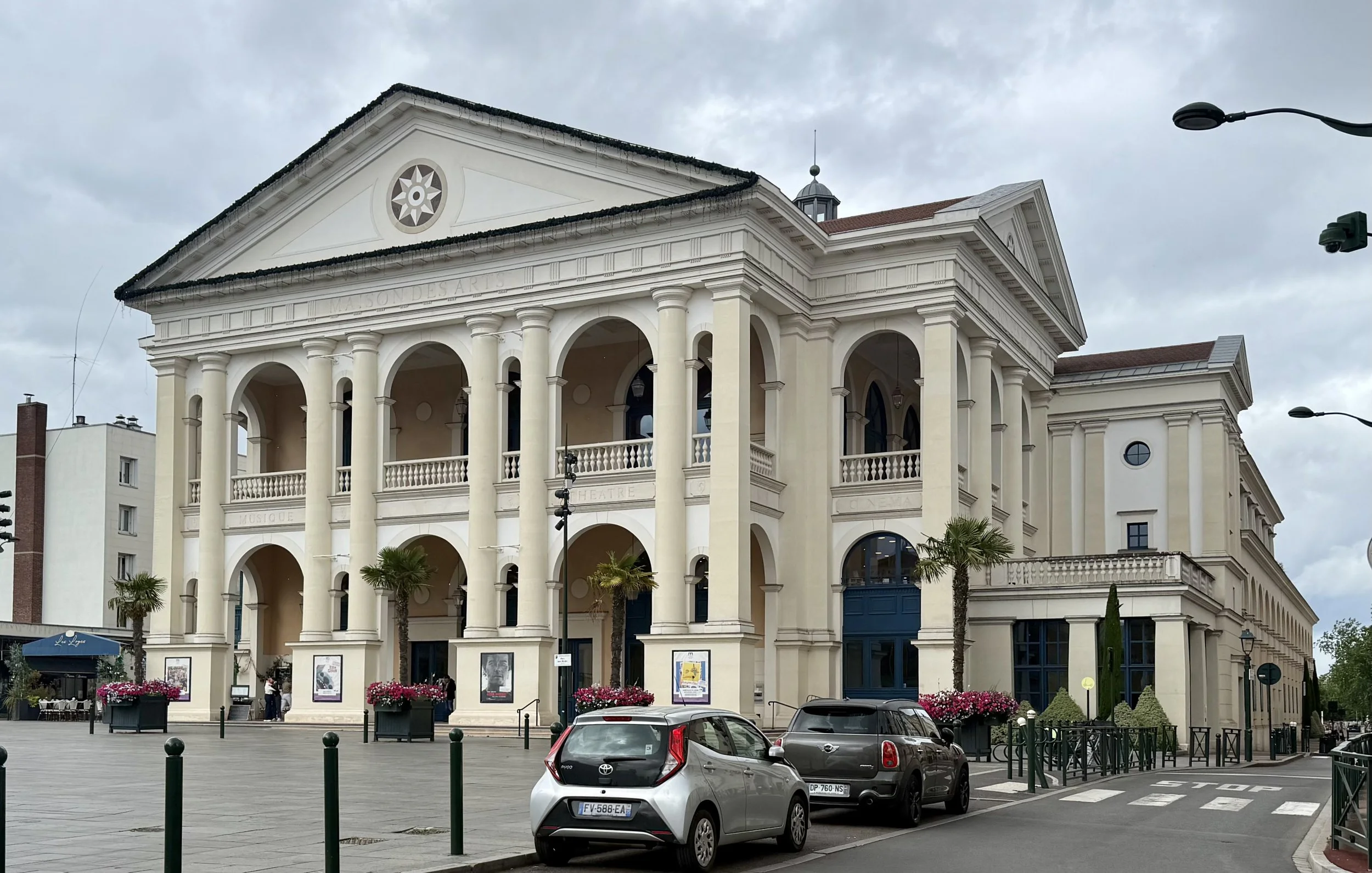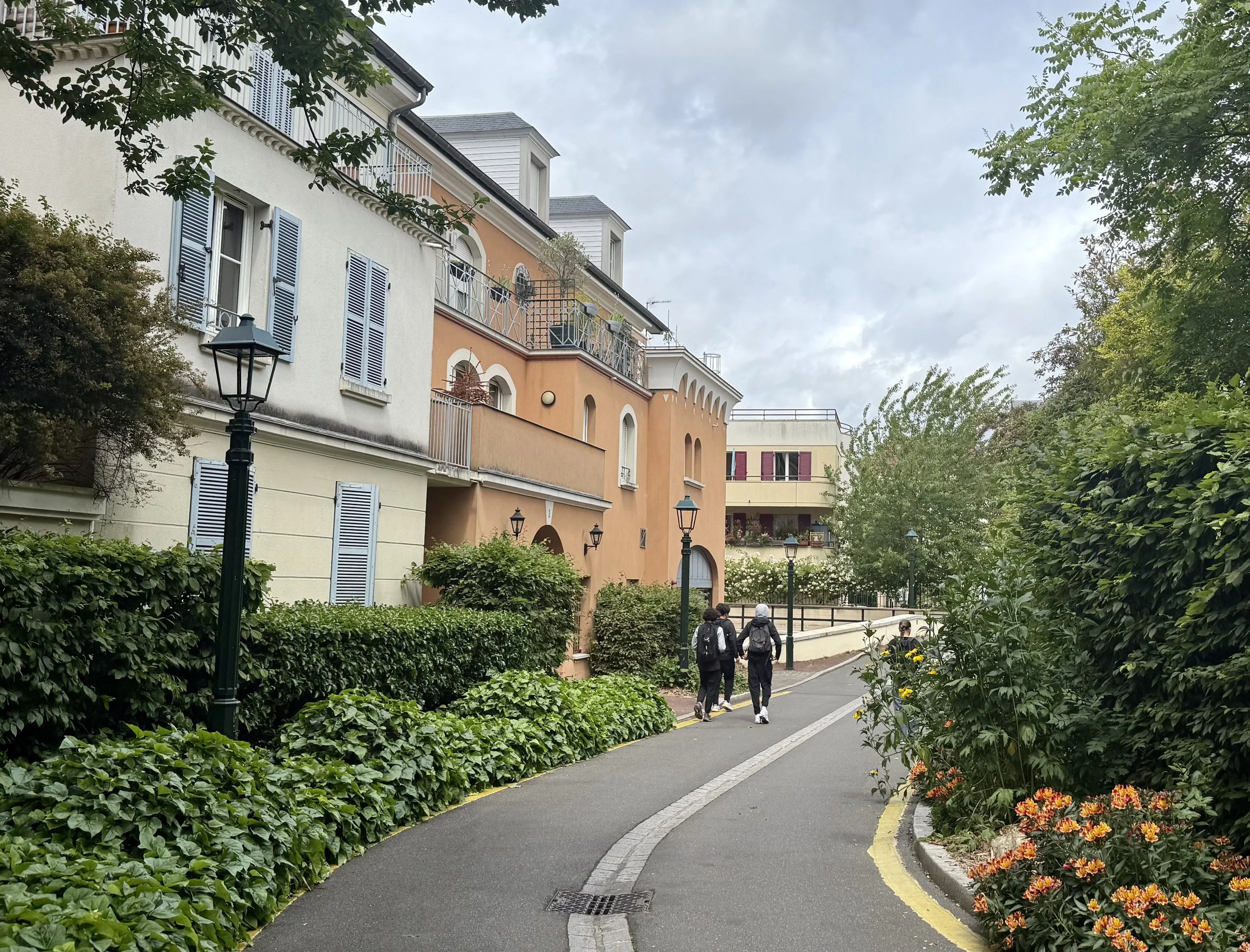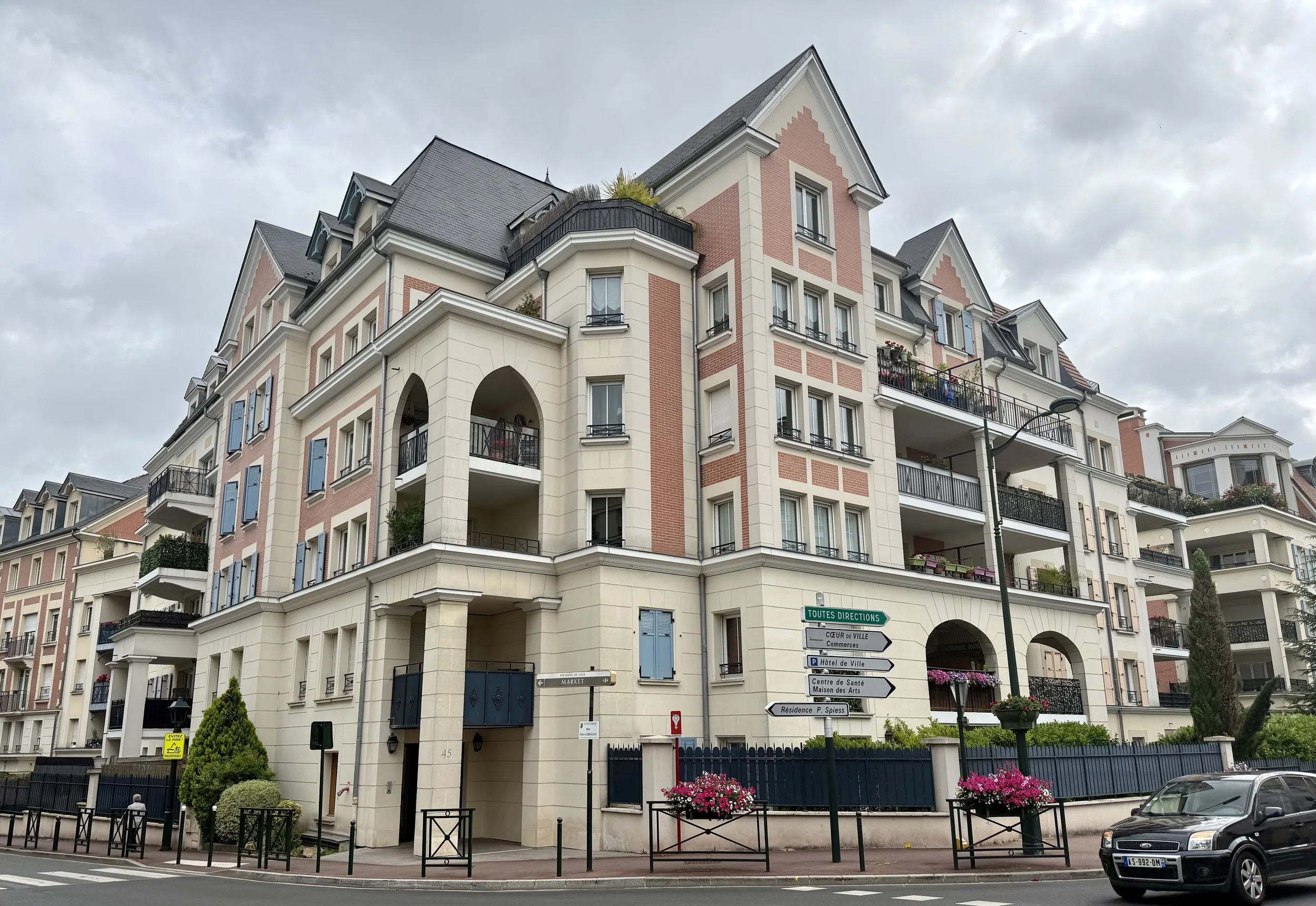Is traditional urbanism dead?
A tale of two new towns: Poundbury & Le Plessis-Robinson
The Problem
In today's urban design world, we often see unattractive new developments filling the empty spaces assigned for new communities to flourish. Beauty has become the forgotten piece of the puzzle of today’s modern design hotchpotch, where the focus is on quantity over quality. Derived from housing stock shortfalls and cost of living constraints, the temptation to build for utility has become the norm, to the detriment of those wanting a pleasant place to live.
What if traditional developments (i.e. new urbanism) holds the key to resolving this problem? What lessons from examples of traditionally-designed new towns overseas can we adopt in dealing with Australia’s housing crisis? There is much to say about how some places do things differently (and perhaps better), however two places stand out as outliers in bucking modern urban planning principles. They have had their fair share of critics too, as naysayers sought to belittle or even mock what they saw as regression to architecture of the past.
The early 1990's saw HM King Charle's beloved Poundbury commence construction - an extension of the country town of Dorchester in England. Around the same time, major revitalisation works began on Le Plessis-Robinson's, the famously depressed municipality on the outskirts of Paris, France.
Le Plessis-Robinson
Short History
In the early 1970's, an economic crisis in France caused widespread socio-economic harm, which saw outer-city areas like Plessis-Robinson suffer from commercial decline and joblessness. Le Plessis-Robinson became a social housing project at scale, which saw the construction of bland high-rise concrete apartment blocks.
With the commune (i.e council) under communist rule (i.e. the mayorship) since World War II, soulless 'commie block' apartments synonymous with the old Soviet Union became a quintessential mark of a local area. These often bland concrete structure lacked practical design sense and were presented as visually jarring - leading to what many would describe as Paris’ least attractive area.
The 1980's saw France undergo significant political unrest, stemming from a combination of several recessions, social tension, and onerous government policies. Against the backdrop of violent crime and mass unemployment, Plessis-Robinson's increasing urban decay lay bare France's deep problems in the form of unmaintained tower blocks riddled with graffiti. During this time, Le Plessis-Robinson had 21,000 residents, with 75% living in public housing, an 80% commercial vacancy rate, and a council almost bankrupt.
Typical 1980’s unit blocks still found in parts of Le Plessis-Robinson
(Source: Author, 2025)
New leadership - new vision
Following voters outing the community party at local elections in 1989, an ambitious 1990's strategy to transform Le Plessis-Robinson into a mixed-use paradise emerged under the leadership of a new mayor by the name of Philippe Pemezec (1989-2018). Pemezec sought to reshape the area and revitalise the many uninspiring derelict grey buildings. Designed by architects Marc and Nada Breitman, Xavier Bohl, and François Spoerry, a new town plan emerged based on the Neo-Traditional style.
The plan blended social housing into the existing built fabric, with both private and social housing coupled together in the same buildings. The architects sought not to simply replicate the admired styles of the past, however utilising classical design principles, proposed unique designs that to serve a specific purpose based on a liveability-first approach, whilst seeking to evoke timeless beauty. The variation of differing styles and forms seen throughout Plessis-Robinson contribute to its visual intrigue and beauty.
Poundbury
Short History
An experiment in adopting traditional design, Poundbury was an autonomous town concept for 400 acres of greenfields land that would extend the existing footprint of Dorchester. In 1987, West Dorset District Council chose a Duchy of Cornwall site, owned by the then Prince of Wales, HM King Charles III to expand the town. Drawing from his own previous work, ‘A Vision of Britain’, the King sought to implement many of the principles of urban planning within the book through collaborating with the council on how this ancient market town would expand. The King acted as the driving force behind the creation of Poundbury, whose vision was rooted in his belief that Post-World War II architecture and planning were destroying the British cities.
In 1988, the King appointed the well-known architect and urban planner, Leon Krier to design the town. Krier championed the return of classical architecture, becoming a leading critic of urban sprawl and high-rise modernist design. He sought a new (or old) way forward, advocating for walkable mixed-use neighbourhoods, whilst challenging the status quo of late 20th-century urban planning principles by emphasising the cultural and social value of architecture.
In designing Poundbury, Krier adopted the traditional vernacular reminiscent of the surrounding Dorset county. The vision also sought to host a range of affordable housing options for a section of the community. By 1989, the Poundbury Masterplan was placed on exhibition for public feedback before planning consent was granted, with construction starting in 1993.
The Masterplan
The vision for Poundbury sought to resurrect the traditional urbanism principles via a masterplan that included local materials, architectural forms inspired by the traditional vernacular, and mixed-uses. Designed with a range of medium density housing types, built to a human scale, Poundbury sought to combine industry, shops and small businesses in the same urban sphere as townhouses, apartment blocks and squares - all the while allocating approximately 35% of housing for integrated social or affordable housing.
The plan was modelled on an 18th-century English village, with narrow, winding streets, lined with traditional terraced homes, leading to public squares, where grander classical buildings would indicate their civic function.
- Ben Pentreath Ltd (Source: benpentreath.com)
Poundbury drew together a motley collection of disparate styles, from flint-clad cottages to Scottish baronial mansions, and from Palladian villas to miniature Gothic castles. And as the town has developed, bigger and bolder elements have emerged, with a Greco-Roman-style square (aptly named 'Queen Mother Square') and neoclassical public buildings (even one resembling Buckingham Palace) gracing the town centre.
Finally, the town's emphasis on walkability is made possible by its highly permeable pedestrian network, with building blocks defining the pattern of street/laneway pattern, and not vice versa. By creating more street level interaction with the built form, lush front gardens and tree-lined streets, walking subsequently becomes a leisure activity that people are interested in. A rich tapestry of arcades, pillars and mouldings also line the public walkways.
Models for Smart Growth?
Populations
Almost thirty years on, Poundbury today is nearing completion, with approximately 1,500 homes and 2,000 jobs supporting a population of more than 3000 people. Completion is anticipated in late 2028, by which time Poundbury will host a population of approximately 5,800 people.
A 2022 census revealed Plessis-Robinson was occupied by about 30,000 people. What is telling is how the urban transformation has led to more public engagement within the locale, and financial investment has increased significantly, leading to warming real estate prices and business investment.
The not-so-great
Unfortunately, Plessis-Robinson has bigger problems than its creamy/dark red colour scheme reminiscent of the 1990's...The responsible regional government, Île-de-France has failed to invest in critical infrastructure, with no train or metro links to Plessis-Robinson. Without a vital mass transit link to inner Paris, where much of Paris' employment, educational establishments and essential services reside, vulnerable groups within the community may face the risk of transport disadvantage. For example, a proportion of young adults, disabled people and single mothers may become excluded from accessing the benefits of society without other means of transport to these critical destinations. Compounding this disadvantage, there is a stark absence of tertiary education institutions in the area, and minimal high schools, with only one located on the edge of the municipality.
In Poundbury on the other hand, cars are king (apologies to King Charles!). Without sufficient high frequency public transport accessible to the town, residents and visitors are mostly forced to rely on motor vehicles, which partly contradicts the town's active transport credentials.
Appropriate Density
Contrary to thoughtless high-rise designs that bear over the local streetscape, both examples demonstrate that density does not necessarily need to be fuelled by 20 storey residential towers. Medium density (otherwise known as the happy middle) as shown, can sensitively weave together a patchwork of land uses where people can live, work and play without compromising on their quality of life. By adopting new urbanism principles and classical architecture that yields to a traditional town-like feel.
Although a higher density in Plessis Robinson than Poundbury, its mid-rise residential apartment blocks (RFB's) have not come at the cost of beauty. Instead of design that is solely focused on function and use, Plessis-Robinson proved that RFB's designed in a traditional vernacular - however limited to a maximum scale (up to five storeys, plus a loft level set within a pitched or mansard roof) can lead to a rather inviting streetscape.
Walkability
Traditional proportions, materiality and mid-rise buildings built for walkability are the key to success of new urban developments. Walking around Plessis-Robinson today, there is a peaceful sense that the urban sphere carries a sort of embrace for those who choose to interact with it. The visual intrigue and value of these structures promote their maintenance and appreciation. Design can be emotive, it can enable people to have an attachment to a place - which is the exact results we see in Le Plessis-Robinson and Poundbury. These examples have since influenced a new generation of architects and planners around the world to embrace the use of classical design principles.
In Poundbury, the attractiveness of walking offered by the highly permeable access plan, combined with the degree of visual interest yields to the obvious health benefits, but also delivers more opportunities to fully appreciate the muses on offer. King Charles (a kean walker himself) has to be given some credit for playing a central role in shaping this picturesque vision, contrary to significant backlash.
When I set out on this venture, I was determined that Poundbury would break the mould of conventional housing development in this country, and create an attractive place for people tolive, work and play. Many people said that it could never succeed but I am happy to say that the sceptics were wrong and it is now a thriving urban settlement alongside Dorchester.
- HM King Charles, speaking as the 24th Duke of Cornwall
(Source: poundbury.co.uk)
Social housing
Social housing is fully-integrated into the community, with more than 30% of new buildings being reserved for social housing. This deviates from the traditional notion of segregation from social housing and market housing. A direct result of integrating different socioeconomic groups through good urban planning can mean the removal of physical barriers (perceived and/or tangible) between groups. Thus, people can feel more a part of a community, rather than feeling isolated and unable to benefit from all that society has to offer.
Community
Both Poundbury and Plessis-Robinson has disproved many of the critics (often the proponents of modernism), with both masterplans holding up as effective town plans that have drawn people out onto the streets to engage more with the public domain. Plessis-Robinson's meandering stream with a series of foot bridges not only create a tranquil setting for a stroll, but also connect people with nature - an important (often forgotten) aspect of our humanity. Coupled with a community garden, Plessis-Robinson's many great features come together to create a sense of place that undoubtedly yields to a sense of pride. As people engage more with their area, such an environment can more easily generate a sense of community, as the typical barriers to human connection fall away.
Like in Poundbury, the attraction of going outside and engaging with the physical wonderland on offer (and the people therein) can be enough to inspire enough meaningful encounters over time, eventually giving birth to a cohesive community.











